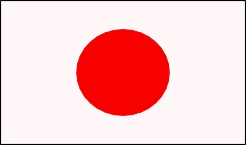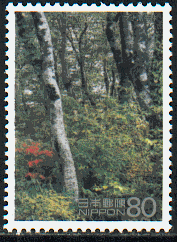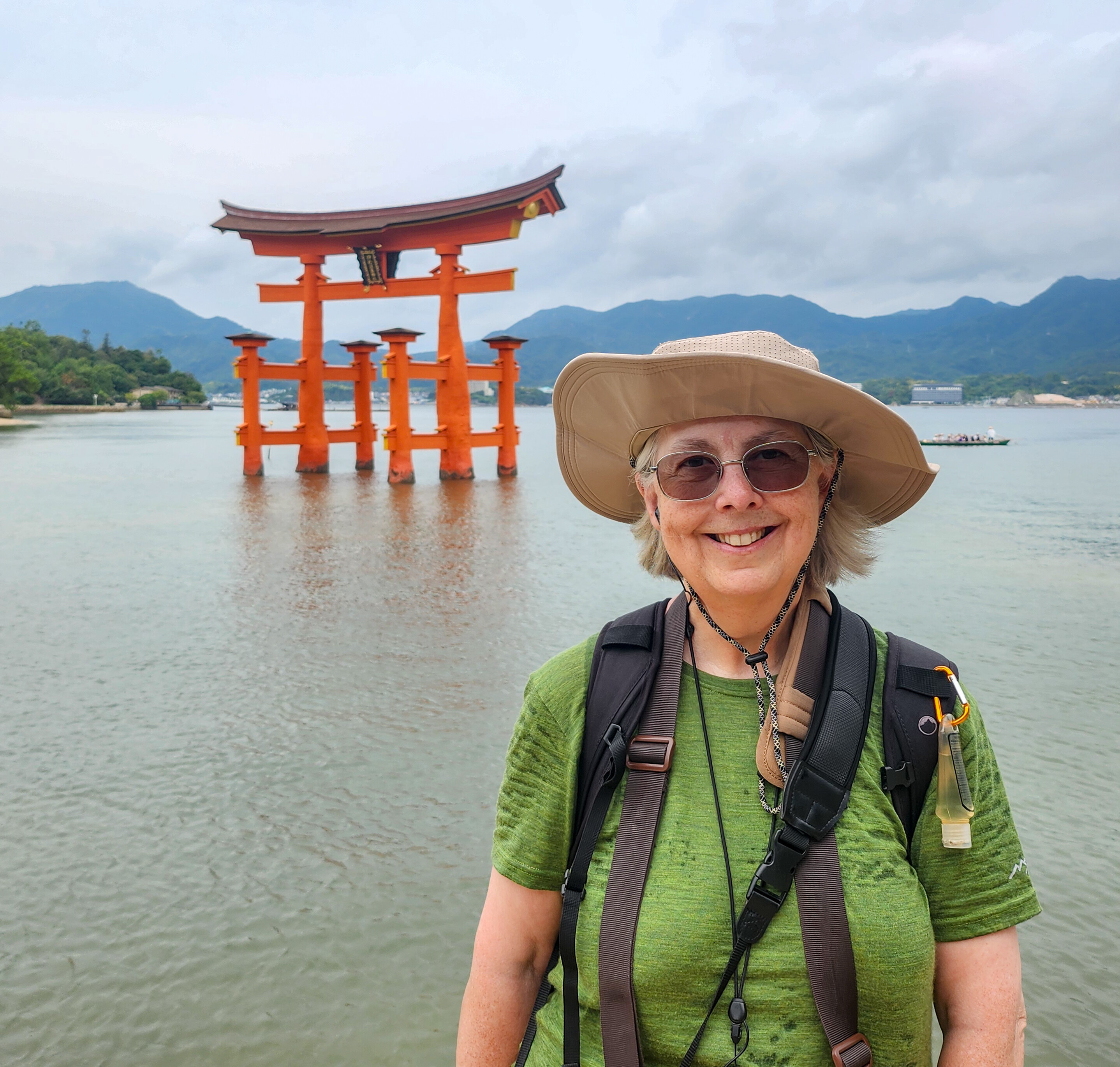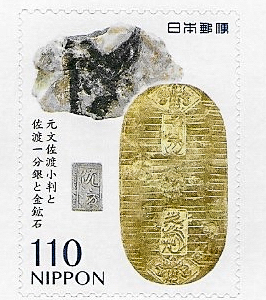
World Heritage Sites in Japan

Shirakami-Sanchi beech forest
(40.47 N 140.13 E) --
satellite image
Situated in the mountains of northern Honshu, this trackless site
includes the last virgin remains of the cool-temperate forest of
Siebold's beech trees that once covered the hills and mountain slopes
of northern Japan. The black bear, the serow and eighty-seven species
of birds can be found in this forest.
Yakushima, an ancient cedar forest
(30.33 N 130.50 E) --
satellite image
Himeji-jo (Himeji Castle)
(34.83 N 134.67 E) --
satellite image
Buddhist monuments in the Horyu-ji area
(34.617 N 135.733 E) --
satellite image
Horyuji Temple is the oldest wooden building in the world and one of
the oldest temples in Japan. It was the first World Heritage Site in Japan.

Historic Monuments of Ancient Kyoto
(34.981 N 135.769 E) --
satellite image
Historic Villages of Shirakawa-go and Gokayama
(36.40 N 136.883 E) --
satellite image
 These Gassho-style houses are
located in a mountainous region that was cut off from the rest of the
world for a long period of time.
The unique wooden houses have steeply pitched
thatched roofs and multiple floors that evolved to adapt to the natural
environment. In particular,
the villagers
subsisted on the cultivation of mulberry trees and
the rearing of silkworms.
These Gassho-style houses are
located in a mountainous region that was cut off from the rest of the
world for a long period of time.
The unique wooden houses have steeply pitched
thatched roofs and multiple floors that evolved to adapt to the natural
environment. In particular,
the villagers
subsisted on the cultivation of mulberry trees and
the rearing of silkworms.

Hiroshima Peace Memorial (Genbaku Dome)
(34.38 N 132.45 E) --
satellite image
The Hiroshima Peace Memorial (Genbaku Dome) was the only structure
left standing in the area where the first atomic bomb exploded on
August 6, 1945.

Itsukushima Shinto Shrine
(34.301 N 132.322 E) --
satellite image
The island of Miyajima, in the Seto inland sea, has been a holy
place of Shintoism since the 6th century. The Itsukushima
Shrine and large O-torii gate date to the 12th century.
Historic Monuments of Ancient Nara
(34.67 N 135.83 E) --
satellite image
Nara's monuments
include significant Buddhist
temples, shrines, and the former imperial palace, Heijo Palace.
Key sites include
Todai-ji Temple, famous for its Great Buddha; Kasuga Taisha Shrine,
known for its thousands of lanterns;
Kofuku-ji Temple which features a prominent five-story pagoda
Shrines and Temples of Nikko
(36.73 N 139.60 E) --
satellite image
Gusuku Sites and Related Properties of the Kingdom of Ryukyu
(26.20 N 127.68 E) --
satellite image
Sacred Sites and Pilgrimage Routes in the Kii Mountain Range (Kii-hanto)
(33.83 N 135.77 E) --
satellite image
The Kii Hanto (Peninsula) is a large mountainous area of Honshu
Island that protrudes into the Pacific Ocean southeast of Osaka and
due south of Nara and Kyoto. It includes Wakayama Prefecture and a
large part of Nara Prefecture.
The majority of the interior of the peninsula is ruggedly mountainous
and served only by a few roads, but no rail lines.
The three sacred sites: Yoshino and Omine, Kumano Sanzan, and Koyasan are
linked by pilgrimage routes to the ancient capital cities of Nara and
Kyoto.
Each of the three sites contains shrines, dating
as early as the 9th century and
reflecting the fusion of Shinto and Buddhism.
Shiretoko Peninsula
(43.949 N 144.966 E) --
satellite image
Located in the northeast of Hokkaido, the
northernmost island of Japan this site includes
is an example of the
interaction of a marine and terrestrial ecosystem and is home
to some endangered and endemic species including
the Blackistons Fish owl, the Viola kitamiana plant,
the Stellers sea lion, and a
number of salmonid species.
Iwami Ginzan Silver Mine
(35.113 N 132.435 E)
Hiraizumi
(39.001 N 141.108 E)
Temples, gardens, and Archaeological sites representing the Buddhist Pure Land
comprises five sites, including the sacred Mount Kinkeisan.
Pure Land Buddhism spread to Japan in the 8th
century. It represented the pure land of Buddha that people aspire to
after death, as well as peace of mind in this life.
Ogasawara Islands
(27.718 N 142.099 E)
The islands offer a variety of landscapes and are home to a wealth of
fauna, including the Bonin Flying Fox, a critically endangered bat,
and 195 endangered bird species
Fujisan
(35.362 N 138.728 E) --
Satellite image
Tomioka Silk Mill and Related Sites
(36.255 N 138.888 E)
Four sites north-west of Tokyo, that correspond to the different stages in the production of raw
silk:
a large raw silk reeling plant imported from France;
an experimental farm for production of cocoons;
a school for the dissemination of sericulture knowledge; and a cold-storage facility for silkworm eggs.
Sites of Meiji Industrial Revolution: Iron and Steel, Shipbuilding and Coal Mining
(34.430 N 131.412 E)
A series of 23 component parts, mostly in southwest Japan.
Architectural Work of Le Corbusier
Multiple sites in:
Argentina, Belgium, France, Germany, India, Japan, and Switzerland
(multiple sites)
Chosen from the work of Le Corbusier, the 17 sites comprising this
transnational serial property are spread over seven countries and are
a testimonial to the invention of a new architectural language that
made a break with the past. They were built over a period of a
half-century, in the course of what Le Corbusier described as "patient
research".
Sacred Island of Okinoshima and Associated Sites in the Munakata Region
(34.245 N 130.105 E) --
satellite view
Hidden Christian sites in the Nagasaki Region
(32.802 N 128.904 E)
This site consists of ten villages, Hara Castle and a cathedral,
built between the 16th and 19th centuries.
Mozu-Furuichi Kofun Group: Mounded Tombs of Ancient Japan
(34.562 N 135.609 E) --
satellite view
Amami-Oshima Island, Tokunoshima Island, Northern Okinawa Island, and Iriomote Island
(28.279 N 129.378 E) --
satellite view
These four islands of subtropical rainforests are located
on a chain located in the southwest of Japan at
the boundary of the East China Sea and Philippine Sea.
Entirely uninhabited by humans, the site
has high biodiversity value with a very high percentage of endemic
and endangered species,
including the endangered Amami
Rabbit (Pentalagus furnessi) and the endangered Ryukyu Long-haired Rat
(Diplothrix legata) that have no living
relatives anywhere in the world.
Jomon Prehistoric Sites
(40.830 N 140.737)
The property consists of 17 archaeological sites in the southern part
of Hokkaido Island and northern Tohoku.

Sado Island Gold Mines
(38.0408 N 138.2578 E)
The 400 year old Sado Mines are located on a remote island in the
Sea of Japan and has long been called "the island of gold".
Back to the
World Heritage List

Lynn Salmon <>{
Last updated: November 30, 2025
 These Gassho-style houses are
located in a mountainous region that was cut off from the rest of the
world for a long period of time.
The unique wooden houses have steeply pitched
thatched roofs and multiple floors that evolved to adapt to the natural
environment. In particular,
the villagers
subsisted on the cultivation of mulberry trees and
the rearing of silkworms.
These Gassho-style houses are
located in a mountainous region that was cut off from the rest of the
world for a long period of time.
The unique wooden houses have steeply pitched
thatched roofs and multiple floors that evolved to adapt to the natural
environment. In particular,
the villagers
subsisted on the cultivation of mulberry trees and
the rearing of silkworms.






